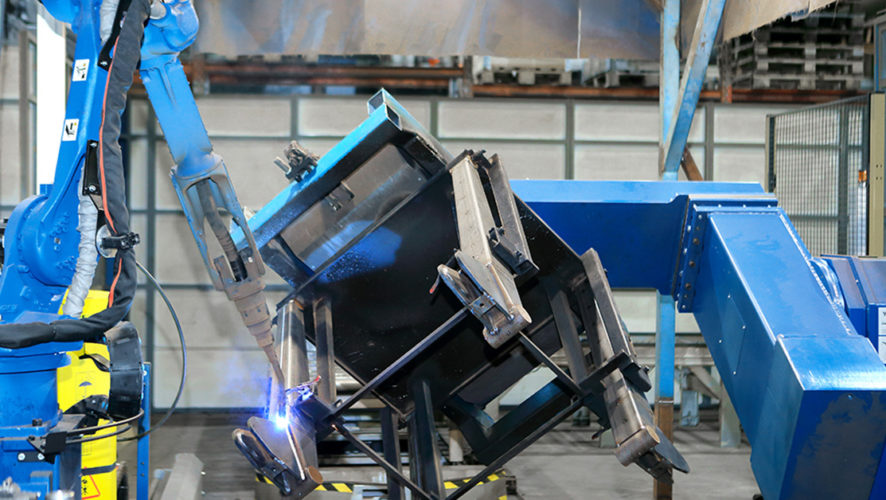A productive, high-quality robotic welding cell is created in collaboration between a robot integrator, a welding machine supplier, and a workpiece designer. The best solution for customizing a robotic welding cell is found when reliable welding equipment with different detection functions meets automation expertise early on in the design phase.
A cost-effective robot investment starts with the choice of a workpiece and 3D modeling of a robot cell. 3D modeling requires expertise in robotics, welding, and workpiece design, as well as smooth interaction between the cooperators. The size of the workpiece is a particularly critical factor in finding the best solution for welding robotization.
For 3D modeling, you need to select:
- a workpiece,
- a robot,
- a suitable turntable,
- other equipment needed for moving the piece, and
- the necessary welds.
Simulation helps in determining possible collision points. Is the range of the robotic solution sufficient, can optimal welding angles be reached, and will the theoretical tolerance be sufficient in reality as well? If the modeling phase reveals some problems, you may need to modify or redesign the workpiece. The model of the robot or its equipment can also be changed to find the best result.
Detecting actual tolerances is an essential factor in the weldability of a workpiece. During the design phase, you must consider the reach of the equipment and its ability to move and react to the shape and size of the seam. You may also consider the robot’s reprogramming, the need for laser search, or other detection functions.
Precise detection functions make welding easier
In welding automation, we often encounter challenges related to the weldability of a workpiece, which a welding machine supplier may have a solution to. The power sources of Kemppi’s A7 MIG Welder system have four different detection functions that improve weld quality. Some of the functions can also detect the location of the seam. The detection systems in welding power sources are often more accurate than those of robots.
- Touch Sense Ignition (TSI) function automatically optimizes the ignition distance.
- Touch Sense function detects contact of the filler wire and the workpiece, allowing the robot to determine the starting point of the weld.
- Through-Arc Seam Tracking (TAST) seam tracking feature signals the filler wire stick-out length to the robot, which allows the robot to track the seam.
- Reduced Gap Technology (RGT) is a technology that continuously adjusts the arc length in narrow gap welding. The arc power remains constant regardless of changes in the nozzle distance as the values of the welding machine are optimized according to the varying filler wire stick-out length. In some cases, this function can replace the use of the TAST signal.
